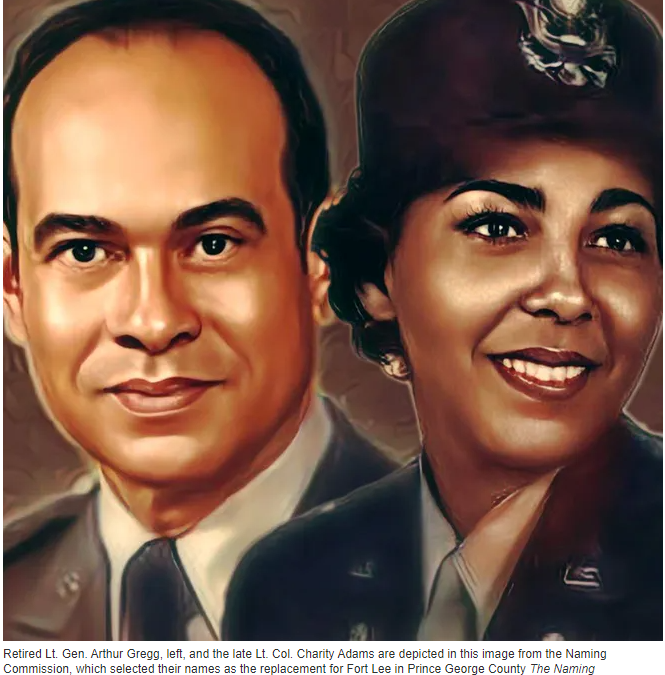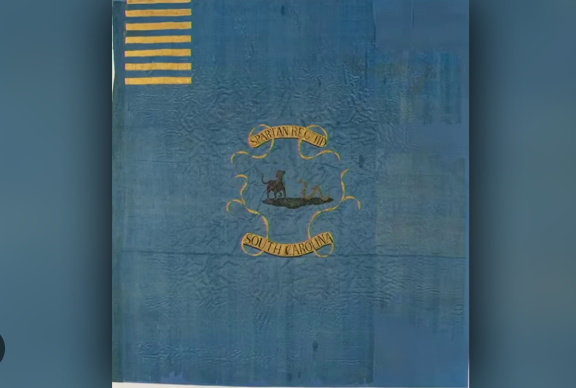WASHINGTON — A Black sergeant who battled German soldiers during World War I. The Army’s first Hispanic four-star general. A woman who served as an Army surgeon during the Civil War.
A commission established by Congress last year has suggested new names for nine Army bases that honor Confederate officers, as the American military continues an examination of its history with race that was intensified in the summer of 2020, after the killing of George Floyd by Minneapolis police.
The commission’s recommendations, if approved by Congress and Defense Secretary Lloyd J. Austin III, would see Fort Bragg — named after Confederate Gen. Braxton Bragg — renamed Fort Liberty, the only one of the bases that would be renamed for an abstract idea and not a person.
In the past, Army bases were largely named for white male soldiers. But the commission’s recommendations cover a multicolored swath of Americans, including women and minorities — two long-ignored populations that have served in or supported the army since its inception.
Under the panel’s recommendations, Fort Lee in Virginia, named after Robert E. Lee, would be renamed Fort Gregg-Adams, after retired Lt. Gen. Arthur Gregg, a logistics officer who rose to become one of the highest ranking African Americans in the Army, and Lt. Col. Charity Adams Earley, the highest-ranking African American woman serving in the Army during World War II; she deployed to Birmingham, England, in 1945 and commanded a battalion responsible for delivering mail to American soldiers.
The Army has long come under fire for honoring treasonous Confederate generals who fought to secede from the United States and who led the rebellion during the Civil War, which killed more American troops than any other military conflict. That criticism became particularly sharp after Mr. Floyd’s death, as President Donald J. Trump threatened to wield the military against protesters who said they were pushing for change.
Mr. Trump threatened to invoke the Insurrection Act of 1807 to send active-duty troops into the cities to take on looters and rioters, but ran into heated and eventually public resistance from the defense secretary at the time, Mark T. Esper, and Gen. Mark A. Milley, the chairman of the Joint Chiefs of Staff.
Mr. Esper and General Milley sought to convey an understanding of the public anger at the time, which had also manifested itself among those in uniform. They also sought to address a gap in the military between its mostly white officer corps and its diverse enlisted ranks, where 43 percent are people of color.
Mr. Trump vehemently opposed the idea of stripping Confederate names from Army bases. “My Administration will not even consider the renaming of these Magnificent and Fabled Military Installations,” he said on Twitter at the time. “Our history as the Greatest Nation in the World will not be tampered with. Respect our Military!”
The Naming Commission, as it is officially known, also reviewed Fort Belvoir, in Virginia, which was originally named after Army Maj. Gen. Andrew A. Humphreys in 1917, but then renamed in 1935 after the Colonial-era plantation that once stood on its grounds. The panel decided that renaming Belvoir did not meet its mandate but recommended that the Pentagon conduct its own review.
“This was an exhaustive process that entailed hundreds of hours of research, community engagement and internal deliberations,” said retired Navy Adm. Michelle Howard, the chairwoman of the commission. “This recommendation list includes American heroes whose stories deserve to be told and remembered; people who fought and sacrificed greatly on behalf of our nation.”
Under the commission’s recommendations, Fort Gordon, in Georgia, would become Fort Eisenhower, after Dwight D. Eisenhower, who was a five-star general in the Army before becoming president. Fort A.P. Hill in Virginia would become Fort Walker, named after Dr. Mary Walker, an Army surgeon and noted abolitionist during the Civil War.
Fort Hood, in Texas, would become Fort Cavazos, after Gen. Richard Cavazos, who received a Silver Star for valor during the Korean War and who became the first Hispanic Army general, a four-star officer. Fort Pickett in Virginia would become Fort Barfoot, after Col. Van T. Barfoot, who received the Medal of Honor for his role in intense fighting against German soldiers near Carano, Italy, during World War II. He later gained attention for successfully fighting his homeowners association in order to keep an American flag flying in his front yard.
Fort Polk, in Louisiana, would become Fort Johnson, after William Henry Johnson, an African American Army sergeant who became one of the first Americans to be awarded the Croix de Guerre Avec Palme, France’s award for the highest valor, for bravery during a battle against German soldiers during World War I.
Fort Rucker, in Alabama, would become Fort Novosel, after Michael Novosel, who gave up the rank of lieutenant colonel in the Air Force Reserve and became a chief warrant officer in the Army, which deployed him to Vietnam. He was awarded the Medal of Honor for his bravery while conducting a medical evacuation under fire during the Vietnam War.
–nytimes.com



